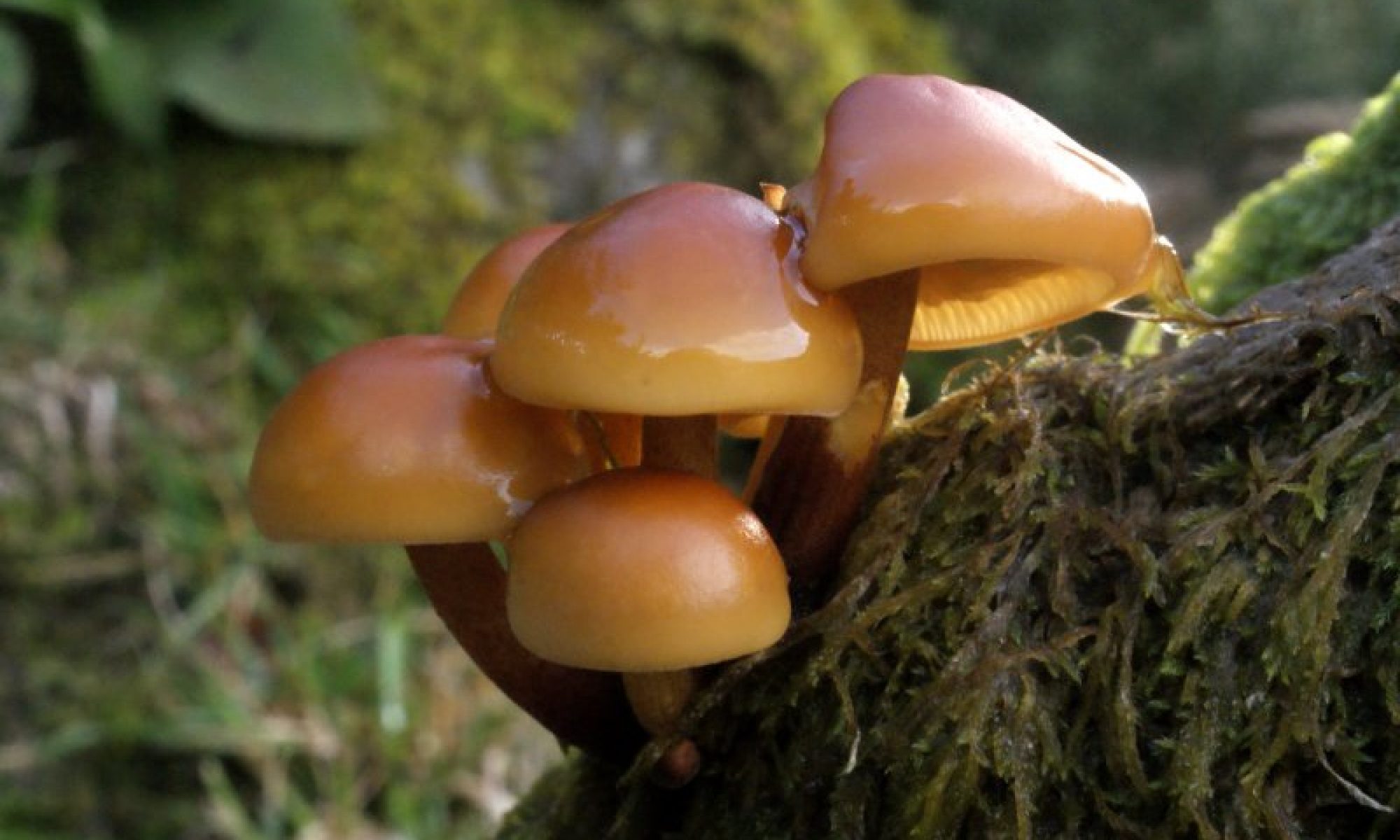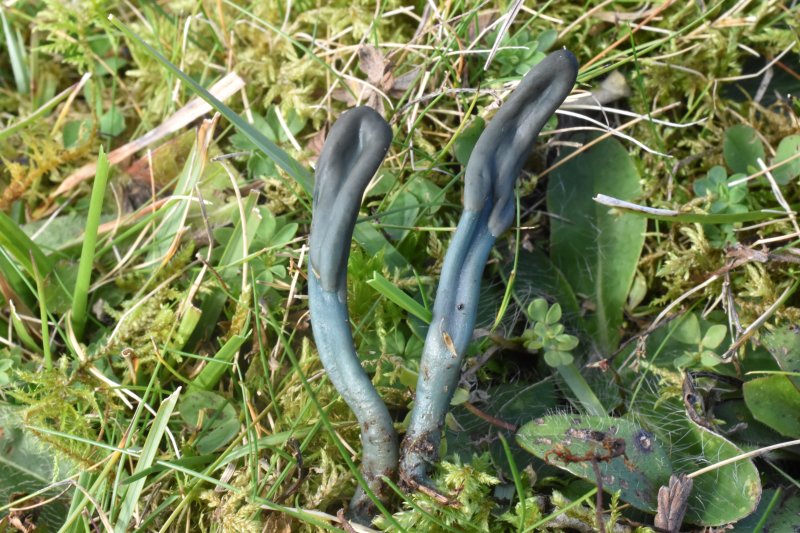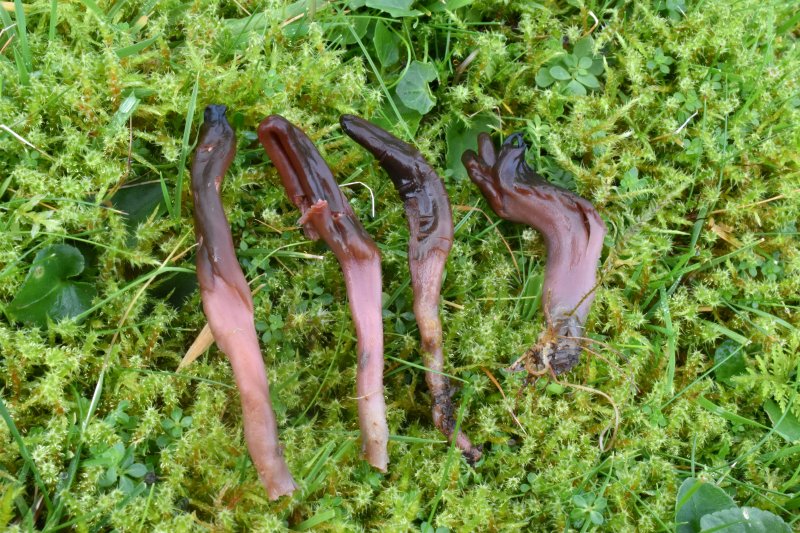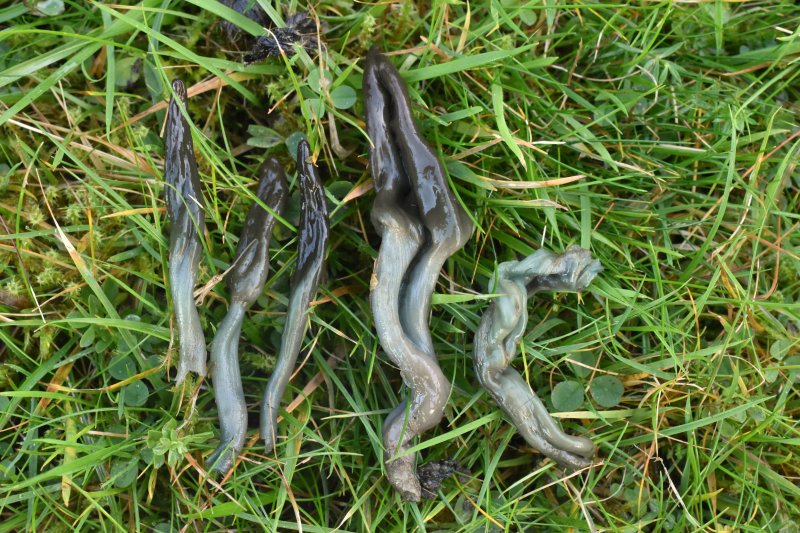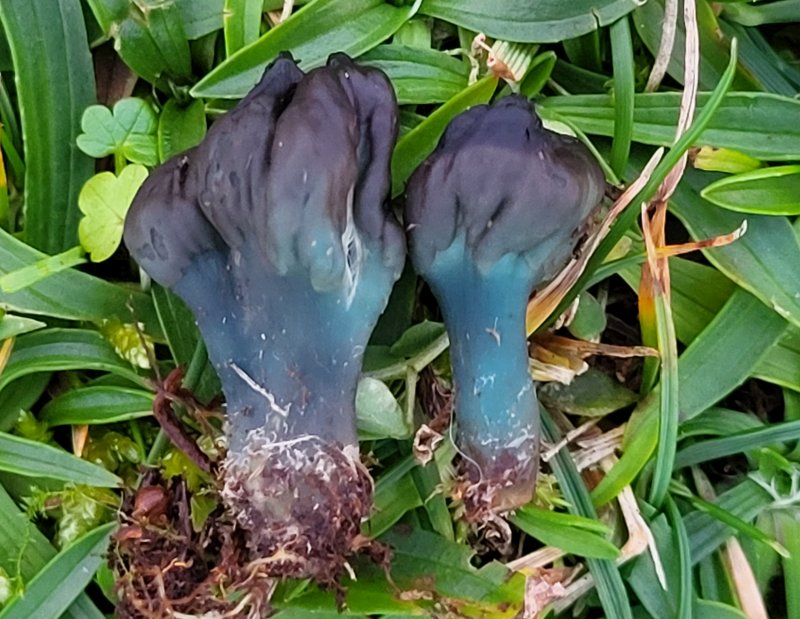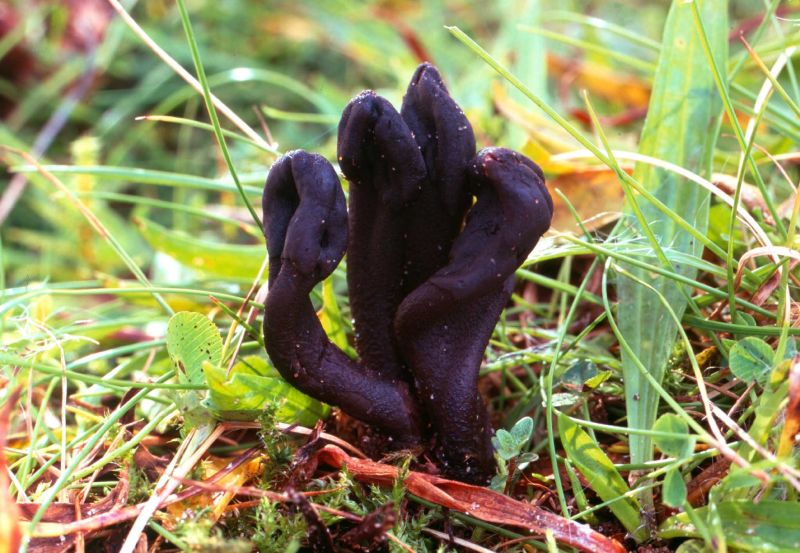Earth tongues are a difficult group. Most cannot be identified without a microscope and even then many are in taxonomic flux and the keys often don’t work particularly well. They seem to have a habit of ejecting immature spores which are undersize or have variable numbers of septa during development. As the spore size and number of septa are critical in most keys, this can lead to confusion. This can be seen with Geoglossum fallax, the most common black Geoglossum. If you take a spore print of it, on day 1, it can produce mostly transparent hyaline spores with no septae. On day 2, it can produce some darkened spores with septae and they get progressively darker with septae over time. Mature spores can have up to 14 septae.
Likewise in Trichoglossums (with the “hairy” stipe), species like Trichoglossum variable and T. tetrasporum with unusual numbers of septae may turn out not to be good species concepts. In the green Microglossums after sequencing results, species with long spores in the published keys like M. truncatum and M. nudipes aff., seem to produce small spores in the published range of M. tenebrosum totally confusing the keys. I’ve given up with Glutinoglossums as nothing keyed out matches sequencing results and it is maybe safer to record every as G. glutinosum s. lat. for now , dry it and put it aside until the group is looked at again.
Having said all this, there are still some key species that we would like specimens of. They are:
Any green or brown earth tongue
These used to be easy being identified as Microglossum olivaceum but that species complex has been split into 7 species plus two as yet unnamed species. Unlike the Geoglossums and Trichoglossums which have dark septate spores, Microglossums have small hyaline spores that are not septate. As mentioned above, the keys appears to be problematic so everything needs to be sequenced so please collect.
Microglossum pratense at Slievenacloy
Microglossum fuscorubens with its distinctive pink stipe at Galboly
Microglossum truncatum at Ballygalley Head
The stunning Microglossum clavatum from Ballyquintin Point. Photo by Maia Taylor
Microglossum atropurpureum
This has hyaline non-septate spores like the M. olivaceum complex but the spores are longer than 25µm. It is more difficult to recognise in the field but is dark brown to black with a purplish tinge. It is much more recognisable under the microscope. This is the subject of deeper investigation though as sequencing has shown that there are two species but so far it has not been possible to distinguish between them micro or macroscopically. More specimens are needed! It is found both in upland grassland and coastal dunes e.g. Cloughey.
Microglossum atropurpureum. Photo by Roy Anderson
“Trichoglossum walteri”
The species of Trichoglossum that we have with consistent 7 septae is not T. walteri or T. octopartitum as listed in some keys. T. walteri was described in Australia under tree ferns and is different to our species molecularly. Similarly, T. octopartitum was described from Belize and is also different. It is thought there are two species present in the UK and these are being described and it would be good to have more material. It looks exactly like T. hirsutum – very black with needle like setae sticking out from the stipe. It is only under the microscope that it becomes distinctive.
